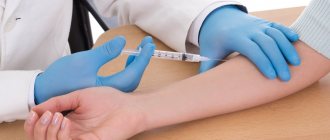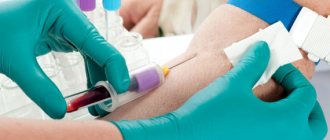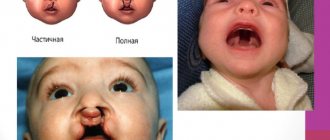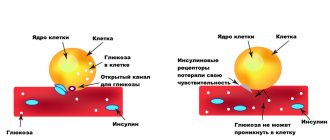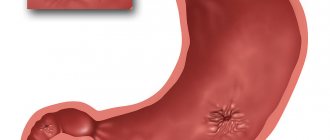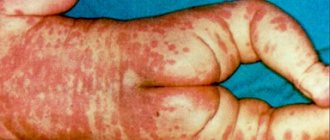Group I
Clinical examination is a comprehensive medical examination of the population, designed to identify diseases and risk factors, as well as a general assessment of the health status of citizens of the Russian Federation, including: examination of patients, laboratory tests, promotion of a healthy lifestyle and drawing the attention of citizens to the state of health of their body.
Persons under 18 years of age undergo medical examinations annually, and the majority of the adult population - once every three years, starting at established age periods (21, 24, 27, etc. until 39) and annually after 40 years.
In this article we will look at what health groups are distinguished based on the results of medical examination of adults and children, and how they differ.
Health groups for adults
Clinical examination is the main activity for research and monitoring of the health level of the adult population. Based on the information obtained as a result of the medical examination, the doctor or paramedic assigns each citizen a health group in accordance with the requirements and criteria defined in Order of the Ministry of Health of the Russian Federation dated March 13, 2021 N 124n “On approval of the procedure for conducting preventive medical examination and medical examination of certain groups of adults population"
The normative act distinguishes four health groups of the adult population - 1, 2, 3a and 3b.
I includes persons who do not have any chronic diseases, as well as risk factors for the development of such diseases, or who have the indicated risk factors with low or average absolute cardiovascular risk and who do not need clinical observation for other diseases (conditions). ).
The results of laboratory examinations of this group of people are within normal limits. As you might guess, this category includes citizens with the most favorable level of well-being.
Based on the results of the medical examination, preventive consultations and other therapeutic and health measures are carried out for people in this category, with the main goal of promoting a healthy lifestyle and compliance with sanitary and hygienic standards.
Group II
This category includes people who do not have any chronic diseases, but are at increased risk of acquiring them. In addition, this includes people who are predisposed to developing cardiovascular diseases. This group is the largest in number, which is associated with a large number of factors that negatively affect the human body (bad habits, poor diet, sedentary lifestyle, climate pollution, etc.).
This category of citizens is diagnosed by conducting a generally accepted standard health examination, as well as additional studies of individual risks, if any.
II includes citizens who have not been diagnosed with chronic non-infectious diseases, but have risk factors for the development of such diseases
- with high or very high absolute cardiovascular risk,
- as well as citizens who have been diagnosed with obesity and (or) hypercholesterolemia with a total cholesterol level of 8 mmol/l or more, and (or) persons
- smoking more than 20 cigarettes a day,
- and (or) persons with an identified risk of harmful alcohol consumption and (or) a risk of consuming narcotic drugs and psychotropic substances without a doctor’s prescription, and who do not need dispensary observation for other diseases (conditions).
Citizens with health group II with high or very high absolute cardiovascular risk are subject to dispensary observation by a doctor (paramedic) of a department (office) of medical prevention or a health center, as well as a paramedic of a paramedic health center or a paramedic-obstetric station, with the exception of patients with total cholesterol levels 8 mmol/l or more, which are subject to dispensary observation by a general practitioner.
For citizens with health group II, if there are medical indications, the general practitioner prescribes medications for medical use for the purpose of pharmacological correction of identified risk factors.
Group III (a and b)
Group IIIa includes persons suffering from chronic non-communicable diseases (CNCDs), which require dispensary observation and highly qualified medical care. The bulk of citizens in this category are people over 40 years old, whose ailments are directly related to age and aging of the body. Medical examination of such persons is carried out for the purpose of secondary prevention, namely to prevent complications and exacerbations of an existing disease.
Category III b includes persons who have not been diagnosed with chronic non-diseases, but who require the establishment of dispensary observation or the provision of specialized, including high-tech, medical care for other diseases, as well as citizens suspected of having these diseases who require additional examination.
Citizens with III a and III b are subject to dispensary observation by a general practitioner and medical specialists with preventive, therapeutic and rehabilitation measures.
Health groups for children
The health groups identified based on the results of clinical examination of the children's population differ significantly from those of adults. First of all, it is worth saying that there are as many as 5 categories for classifying children (as opposed to 3 for adults).
This amount is associated with the increased vulnerability of the child’s body to various diseases, which is why their clinical examination requires more attention and thoroughness, which ultimately leads to the receipt of a significant amount of information for classification into categories.
1 group
This category includes physically and mentally healthy children who have high body resistance to disease. They can also sometimes get sick, but at the time of examination they do not have any pathologies. In fact, group 1 includes children who are not sick at all, but in practice there are very few such children.
2nd group
This category includes children who do not suffer from chronic diseases, but have reduced immunity. Such babies can suffer acute infections several times a year, but nothing more. They are usually divided into several subgroups according to the type of risk. For example, category “A” includes children with problematic heredity, and “B” includes children at risk of developing chronic diseases.
3 group
Category 3 includes children with any chronic disease. However, patients in this category are distinguished by the fact that such a disease occurs in a state of compensation. This means that, despite the presence of pathology, the child does not face severe consequences or exacerbations of the disease and can lead a normal life.
4 group
This health category denotes children with chronic illnesses in the subcompensation stage. In this state, there is already a significant deterioration in well-being, disruption of the functioning of some organs and reduced body resistance. Such children often need constant treatment and rehabilitation, while their diseases are most often expressed in some kind of physical disability, and their neuropsychic development is normal.
5 group
This category includes children with serious chronic diseases in a state of decompensation. These are disabled children with severe developmental problems or reduced functionality. It is worth noting that diseases of this group are not always congenital. An absolutely healthy child after an illness, surgery or injury can receive group 5. Such children almost always require constant supervision and assistance.
Conclusion
Thus, health groups represent a scale by which the condition of the body, both an adult and a child, is determined.
Taking into account examinations by specialized specialists, the health group is determined by a pediatrician or therapist, who, in turn, carries out a comprehensive assessment of the condition of the human body.
Read also:
- Order of the Ministry of Health of the Republic of Kazakhstan dated December 30, 2015 No. 2158 “On conducting clinical examination of certain groups of the adult population of the Republic of Crimea in 2016”
- Stages of medical examination
- Regulatory acts
- Health groups for adults and children
- Clinical examination. Question answer
- Results of medical examinations and medical examinations in clinical hospital No. 1 for 9 months of 2016
- Working ahead. How medical examination improves health
- Results of medical examinations and medical examinations in KB No. 1 for 2021
- Why undergo medical examination if you feel healthy?
- Free medical examination of the population in 2021: what does it include and who has the right to undergo it?
- Complete information about medical examination
- Ministry of Health: medical examination allowed to increase the detection of cancer by 72%
- All-Russian medical examination has started
- Order of the Ministry of Health of Russia dated March 13, 2019 N 124n “On approval of the procedure for conducting preventive medical examination and medical examination of certain groups of the adult population”
- What diagnostic studies are carried out as part of medical examination at the first stage by age?
- What diagnostic studies are carried out as part of the medical examination at the second stage?
- Medical examination goals
PMPC recommendations
The PMPK decides to issue a conclusion collectively, taking into account the special educational needs of students and the individual development situation. The conclusion reflects the following data:
— the presence/absence of the need to create conditions for the child to receive an education, correction of developmental disorders and social adaptation based on special pedagogical approaches (does the child need to be accompanied by specialists in psychological and pedagogical profiles, medical supervision);
— PMPC recommendations for creating special conditions for teaching and raising a child on the basis of an educational organization (defining the educational program, the need for architectural accessibility, the need to be accompanied by an assistant (assistant), the need to be accompanied by a tutor, special conditions for passing the State Examination, as well as recommendations on the necessary areas of correctional developmental work of specialists and the period for re-passing the PMPC).
Indicators that determine the capacity of pediatric services
Figure 20 shows the dynamics of indicators of the provision of pediatric beds and pediatricians to the child population (with graduate students, clinical residents, interns), as well as local pediatricians. It can be seen that in Russia from 2000 to 2015, the provision of pediatric beds decreased by 1.9 times (from 35.5 to 19.1), and by pediatricians - by 1.3 times (from 25.3 to 19.3).
Since 2007, there has been a decrease in the supply of local pediatricians to the child population by 13% (from 10.5 to 9.1). Today, the number of local pediatricians in Russia is 26 thousand. Calculations show that 36.3 thousand such doctors are needed. The calculation is made as follows: the number of attached children from 0 to 17 years old at one pediatric site according to the standards is 800 people. Then 36.3 thousand {29 million ÷ 800} are needed for local pediatricians, where 29 million is the number of children aged 0 to 17 years. Thus, in Russia today there is a shortage of more than 10 thousand local pediatricians. According to Rosstat forecasts (medium version), by 2021 the number of children and adolescents will increase by 1.8 million people, or 7%, which will worsen the shortage of local pediatricians.
Figure 20. Dynamics of performance indicators of pediatric services in Russia
Security per 10 thousand population of the corresponding age
Health indicators for children and adolescents
Children's health indicators (0–14 years)
In Russia, from 1980 to 2014, the proportion of children born sick or who became ill during the neonatal period increased 4.2 times (Fig. 11). The number of children born prematurely (dark column in Fig. 11) remained virtually unchanged during the period under review. However, in the 1990s. There was a decrease in the number of children born prematurely, but since 2000 the number of such children has increased by 1.5 times.
Figure 11. Dynamics of the share of children born sick or sick during the neonatal period in Russia
The primary incidence of children in Russia from 1990 to 2015 increased in almost all classes of diseases (except for infectious diseases and diseases of the nervous system). Primary morbidity from neoplasms increased by 4.6 times, from congenital anomalies - by 4.1 times, from diseases of the musculoskeletal system and connective tissue - by 4 times, from diseases of the circulatory system - by 3.8 times, etc. (Fig. 12).
Figure 12. Structure of primary morbidity among children (0–14 years) in Russia
Number of cases per 100 thousand children of the corresponding age
The structure of the overall morbidity rate among children in Russia in 2015 is presented in Fig. 13. The most common case of disease among children is the general incidence of respiratory diseases (54.8%), diseases of the digestive system - 5.9%, eye diseases - 5.4%, external causes - 4.7%, skin diseases - 4.4%, etc.
Figure 13. Structure of general morbidity among children (0–14 years) in Russia in 2015.
The overall incidence of children by disease class in Russia increased by 1% from 2005 to 2015 (Fig. 14). The most intensive growth is observed from congenital anomalies - by 27%, from respiratory diseases - by 12%. The overall incidence of diseases of the nervous system (by 10%) and ear diseases (by 3%) also increased. From 2005 to 2015, the overall incidence decreased for the following classes of diseases: certain conditions of the perinatal period - by 32%, infectious diseases - by 17%, diseases of the digestive system - by 15%, diseases of the endocrine system - by 10%.
Figure 14. Dynamics of overall morbidity among children (0–14 years) in Russia
Health indicators for adolescents (15–17 years old)
The primary incidence of adolescents in Russia from 1991 to 2015 increased for all classes of diseases (Fig. 15). The most intensive increase in primary morbidity from diseases of the blood (8.3 times), neoplasms (7.5 times), genitourinary system (5.6 times), endocrine (5.5 times) and musculoskeletal (5.5 times) ,4 times) etc.
Figure 15. Structure of primary morbidity among adolescents (15–17 years old) in Russia
Number of cases per 100 thousand adolescents of the corresponding age
The structure of the overall morbidity rate among adolescents in Russia in 2015 is presented in Fig. 16. Just like among children, the most common disease among adolescents is respiratory diseases – 33.8%. Diseases of the musculoskeletal system, external causes, diseases of the digestive system and eye diseases each account for 7–10% of the total morbidity. Approximately 5% each are due to diseases of the genitourinary system, skin diseases and diseases of the nervous system.
Figure 16. Structure of overall morbidity among adolescents (15–17 years old) in Russia in 2015.
The overall incidence of adolescents by disease class in Russia increased by 22% from 2005 to 2015 (Fig. 17). An increase is observed in all classes of diseases, except infectious ones. The overall morbidity rate from neoplasms increased most intensively - by 73%, external causes - by 42%, ear diseases - by 39%, diseases of the nervous system - by 35%, etc.
Figure 17. Dynamics of overall morbidity among adolescents (15–17 years old) in Russia
Number of cases per 100 thousand population of the corresponding age
Childhood disability
In the structure of causes of primary childhood disability (0–17 years) in Russia in 2015, mental disorders (25.8%) and diseases of the nervous system (23.9%) predominated (Fig. 18).
Figure 18. Structure of causes of primary childhood disability (0–17 years) in Russia in 2015.
Congenital anomalies accounted for 17.7%, endocrine system diseases – 6.8%, ear diseases – 5.6%. The dynamics of primary childhood disability (0–17 years) in Russia by disease class are presented in Fig. 19.
Figure 19. Dynamics of primary childhood disability (0–17 years) in Russia by disease class
Number of diseases causing disability per 10 thousand children of the corresponding age
From 2000 to 2014, there was an increase in childhood disability from diseases of the endocrine system by 43%, from mental disorders - by 30%, from diseases of the circulatory system - by 24%, from neoplasms - by 19%, etc. For some classes of diseases, there was a decrease in primary childhood disability: external causes - by 60%, diseases of the genitourinary system - by 56%, diseases of the respiratory system - by 52%, etc.
